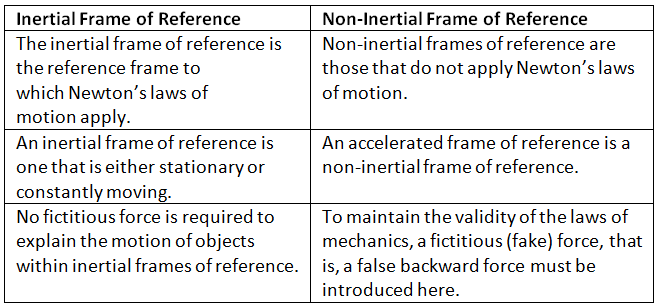Understanding Frame of Reference | Physics for EmSAT Achieve PDF Download
| Table of contents |

|
| What is Frame of Reference? |

|
| Types of Frames of Reference |

|
| Frame of Reference Examples |

|
| Difference between Inertial and Non-Inertial Frame of Reference |

|
A frame of reference is essential for describing the motion of an object. It consists of a coordinate system and a timekeeping device used to determine aspects such as position and speed of moving objects. Within these frames, dimensions are typically defined using axes for space and a clock for time.
In the physical realm, an object's frame of reference is determined by the coordinate system linked to it. The selection of this frame depends on the specific problem being considered. For instance, when examining a bowling ball rolling down a lane, we can establish a frame of reference tied to either the floor or the ball itself if we want to analyze the movement of an insect on the ball. This discussion will delve further into the concepts of frames of reference within the field of Physics.
What is Frame of Reference?
A frame of reference is a set of coordinate axes that define the position of a particle in two- or three-dimensional space. The Cartesian coordinate system is the most basic frame of reference, in which a particle’s position is specified by three coordinates x,y, and z.
Types of Frames of Reference
Following are the two types of frame of reference
Inertial Frame of Reference
When no force is acting and the body is in constant motion, the frame of reference is inertial. When the bodies in this frame follow Newton’s law of inertia and other Newtonian mechanics laws. Unless acted upon by an external force, a body in this frame remains at rest or in continuous motion.
Example of Inertial Frame of Reference
A truck, for example, moving at a constant speed provides an inertial frame of reference for the people inside. A motionless ramp down which objects can roll is another example. An inertial frame of reference is one in which there is no acceleration.
Non-Inertial Frame of Reference
A non-inertial frame is defined as an accelerated frame for an inertial frame of reference. Newton’s laws cannot be applied in a non-inertial frame of reference. When a body is accelerated without being acted on by an external force, the frame of reference is said to be non-inertial.
Example of Non-Inertial Frame of Reference
A train moving at a constant speed and a car turning at a constant speed are both examples of inertial and non-inertial reference frames. Non-inertial reference frames are those that accelerate either linearly or rotate around an axis.
Frame of Reference Examples
Some real-life examples of frames of reference are given below:
- Earth's Surface: For most everyday situations, we use the Earth's surface as our frame of reference. When you say you are standing still, you mean you are not changing your position relative to the ground.
- Aircraft in Flight: Pilots and passengers inside an airplane use the aircraft itself as a frame of reference. The sensation of turbulence or banking during a turn is perceived relative to the motion of the plane.
- Watching a Sports Game: When watching a soccer match, the stands or the TV screen serve as your frame of reference. You observe the players' motion relative to the field or screen.
- Elevator Ride: In an elevator, the frame of reference can change. When the elevator accelerates upward, you feel heavier, and when it descends, you feel lighter. These sensations are due to your motion relative to the elevator.
- Space Travel: Astronauts in a spacecraft use the spacecraft as their frame of reference. Their perception of motion and gravity is relative to the spacecraft's movement.
Difference between Inertial and Non-Inertial Frame of Reference
Some main differences between inertial and non-inertial frame of reference are as follows.
|
208 videos|230 docs|191 tests
|

|
Explore Courses for EmSAT Achieve exam
|

|
















